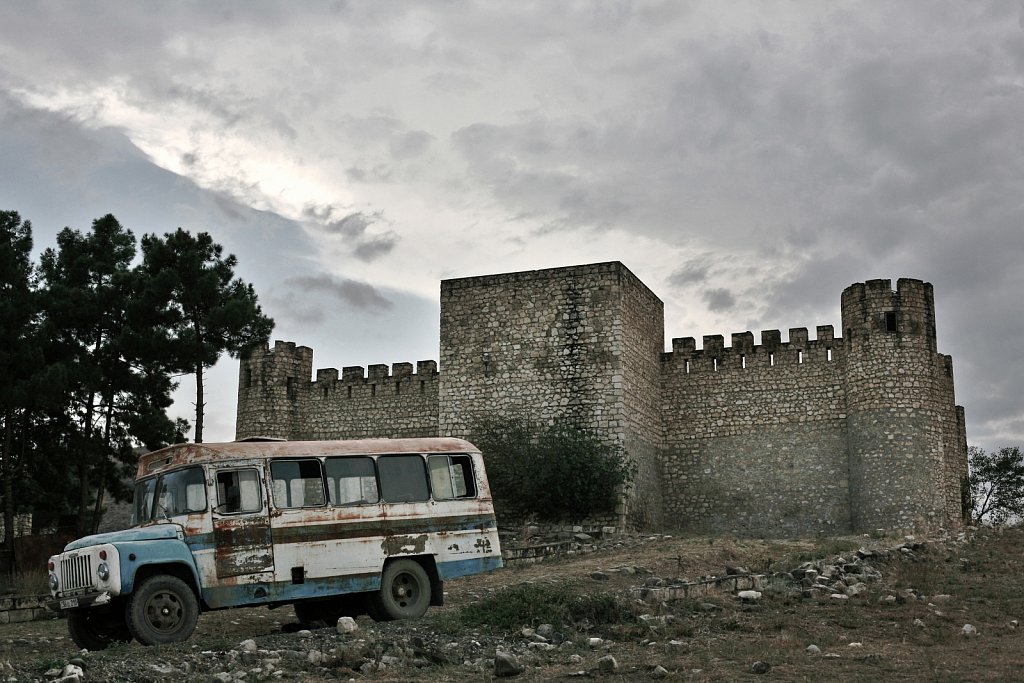
Nagorno-Karabakh
Tigranakert castle-museum near to the city of Tigranakert, built by Armenian King Tigran the Great (Ist century), dating back to the Hellenistic period. According to historians there were 5 major cities built by Tigran the Great at various strategic positions throughout the Armenian Empire. Each of these cities was named after the king - Tigranakert. This one, named Tigranakert of Artsakh, occupies an area of about 50 hectares and is located in the province of Martakert in the Nagorno-Karabakh, four kilometers South of the Khachenaget River. Excavations at Tigranakert began in March 2005, when it was first discovered, and are currently ongoing. Aghdam region, Nagorno-Karabakh, 19 September 2008.

Nagorno-Karabakh
Armenian ornaments discovered in the church ruins (Vth-VIIth centuries) near the city of Tigranakert, built by Armenian King Tigran the Great (Ist century), dating back to the Hellenistic period. According to historians there were 5 major cities built by Tigran the Great at various strategic positions throughout the Armenian Empire. Each of these cities was named after the king - Tigranakert. This one, named Tigranakert of Artsakh, occupies an area of about 50 hectares and is located in the province of Martakert in the Nagorno-Karabakh, four kilometers South of the Khachenaget River. Excavations at Tigranakert began in March 2005, when it was first discovered, and are currently ongoing. Aghdam region, Nagorno-Karabakh, 19 September 2008.
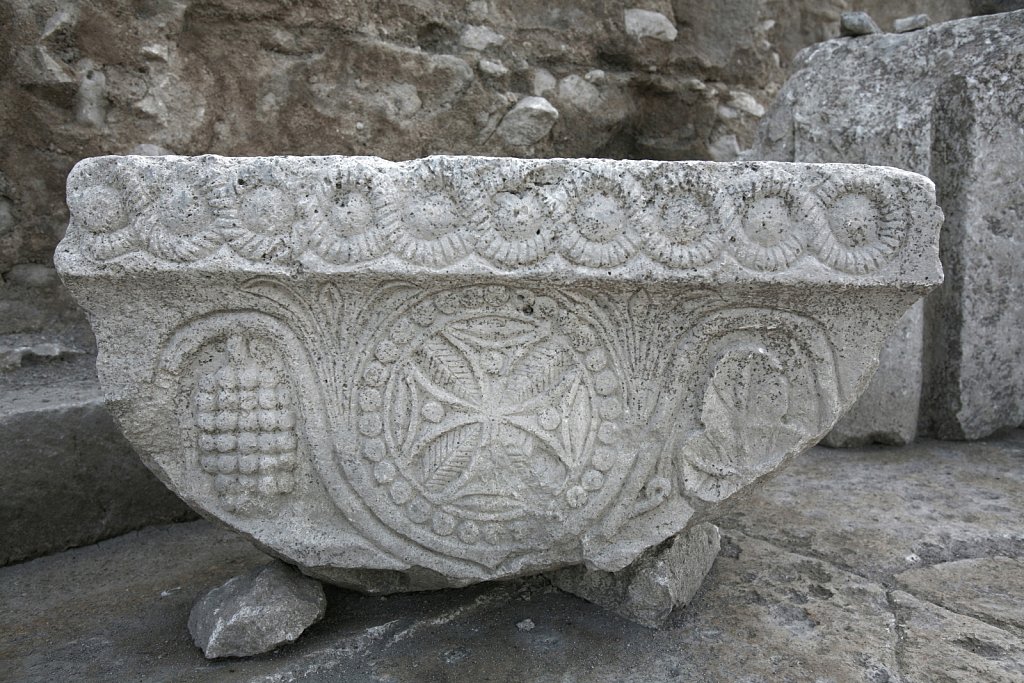
Nagorno-Karabakh
Armenian ornaments discovered in the church ruins (Vth-VIIth centuries) near the city of Tigranakert, built by Armenian King Tigran the Great (Ist century), dating back to the Hellenistic period. According to historians there were 5 major cities built by Tigran the Great at various strategic positions throughout the Armenian Empire. Each of these cities was named after the king - Tigranakert. This one, named Tigranakert of Artsakh, occupies an area of about 50 hectares and is located in the province of Martakert in the Nagorno-Karabakh, four kilometers South of the Khachenaget River. Excavations at Tigranakert began in March 2005, when it was first discovered, and are currently ongoing. Aghdam region, Nagorno-Karabakh, 19 September 2008.

Nagorno-Karabakh
Ancient church ruins (Vth-VIIth centuries) near the city of Tigranakert, built by Armenian King Tigran the Great (Ist century), dating back to the Hellenistic period. According to historians there were 5 major cities built by Tigran the Great at various strategic positions throughout the Armenian Empire. Each of these cities was named after the king - Tigranakert. This one, named Tigranakert of Artsakh, occupies an area of about 50 hectares and is located in the province of Martakert in the Nagorno-Karabakh, four kilometers South of the Khachenaget River. Excavations at Tigranakert began in March 2005, when it was first discovered, and are currently ongoing. Aghdam region, Nagorno-Karabakh, 19 September 2008.
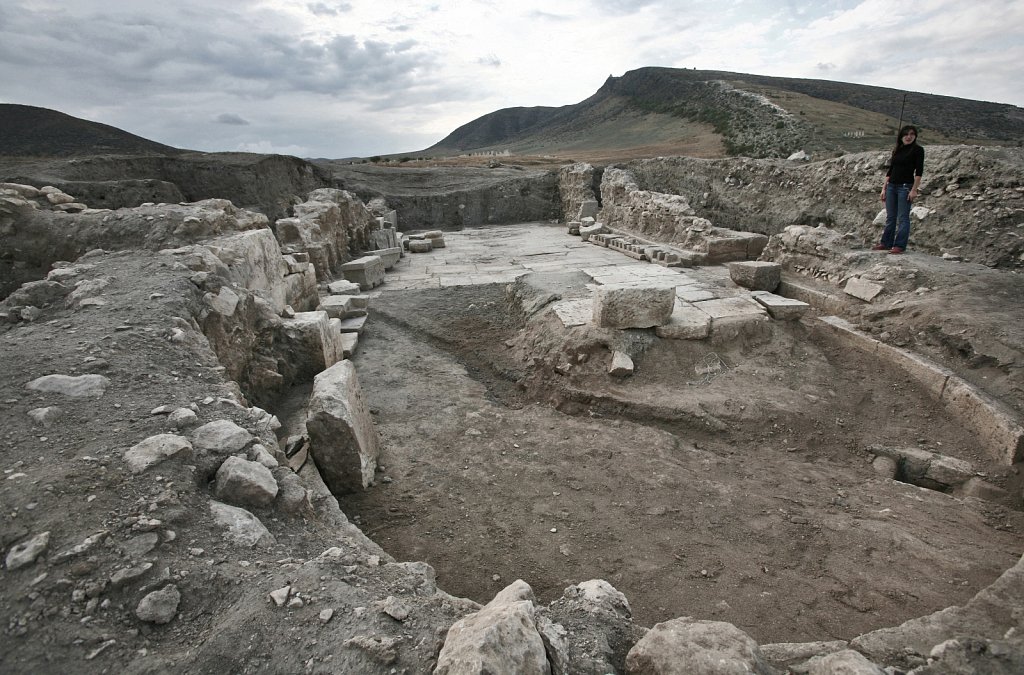
Nagorno-Karabakh
Ancient church ruins (Vth-VIIth centuries) near the city of Tigranakert, built by Armenian King Tigran the Great (Ist century), dating back to the Hellenistic period. According to historians there were 5 major cities built by Tigran the Great at various strategic positions throughout the Armenian Empire. Each of these cities was named after the king - Tigranakert. This one, named Tigranakert of Artsakh, occupies an area of about 50 hectares and is located in the province of Martakert in the Nagorno-Karabakh, four kilometers South of the Khachenaget River. Excavations at Tigranakert began in March 2005, when it was first discovered, and are currently ongoing. Aghdam region, Nagorno-Karabakh, 19 September 2008.

Nagorno-Karabakh
A man watches the ruins of the ancient city of Tigranakert from the plateau of the Vanqasar church. According to historians there were 5 major cities built by Tigran the Great at various strategic positions throughout the Armenian Empire. Each of these cities was named after the king - Tigranakert. This one, named Tigranakert of Artsakh, occupies an area of about 50 hectares and is located in the province of Martakert in the Nagorno-Karabakh, four kilometers South of the Khachenaget River. Excavations at Tigranakert began in March 2005, when it was first discovered, and are currently ongoing. Aghdam region, Nagorno-Karabakh, 19 September 2008.
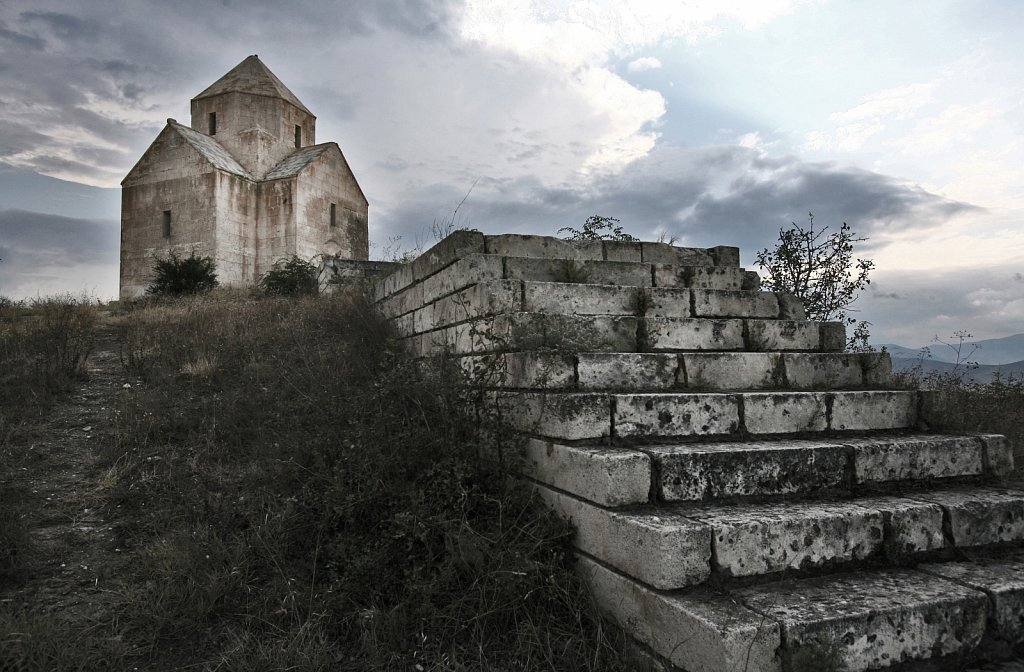
Nagorno-Karabakh
The Church of Vanqasar is an VIIth century Armenian church near Tigranakert of Artsakh. According to historians there were 5 major cities built by Tigran the Great at various strategic positions throughout the Armenian Empire. Each of these cities was named after the king - Tigranakert. This one, named Tigranakert of Artsakh, occupies an area of about 50 hectares and is located in the province of Martakert in the Nagorno-Karabakh, four kilometers South of the Khachenaget River. Excavations at Tigranakert began in March 2005, when it was first discovered, and are currently ongoing. Aghdam region, Nagorno-Karabakh, 19 September 2008.

Nagorno-Karabakh
The gate of Vanqasar church (VIIth century) near Tigranakert of Artsakh. According to historians there were 5 major cities built by Tigran the Great at various strategic positions throughout the Armenian Empire. Each of these cities was named after the king - Tigranakert. This one, named Tigranakert of Artsakh, occupies an area of about 50 hectares and is located in the province of Martakert in the Nagorno-Karabakh, four kilometers South of the Khachenaget River. Excavations at Tigranakert began in March 2005, when it was first discovered, and are currently ongoing. Aghdam region, Nagorno-Karabakh, 19 September 2008.

Nagorno-Karabakh
Mayraberd Askeran Fortress (built 1751) is situated in the town of Askeran, 14 km East from Stepanakert, the capital of Nagorno-Karabakh. It is located on the banks of the Qarqar River and was built by the Karabakh khanate ruler Panah Ali Khan and consists of two sections. The left-bank section features a double line of stone walls - 2m thick and 9m tall. The walls of this vanguard fort of Karkar valley stretch over 1.5km and during the Nagorno-Karabakh War, the fortress served as the military headquarters for Nagorno-Karabakh Armenians fighting against Azerbaijan. Askeran, Nagorno-Karabakh, 19 September 2008.
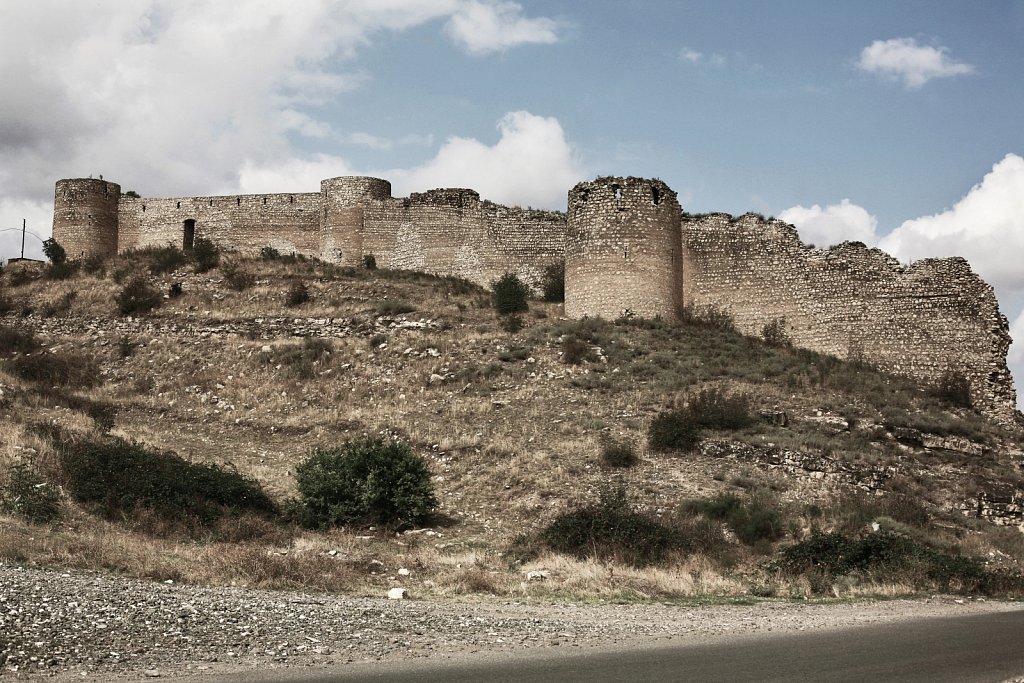
Nagorno-Karabakh
Mayraberd Askeran Fortress (built 1751) is situated in the town of Askeran, 14 km East from Stepanakert, the capital of Nagorno-Karabakh. It is located on the banks of the Qarqar River and was built by the Karabakh khanate ruler Panah Ali Khan and consists of two sections. The left-bank section features a double line of stone walls - 2m thick and 9m tall. The walls of this vanguard fort of Karkar valley stretch over 1.5km and during the Nagorno-Karabakh War, the fortress served as the military headquarters for Nagorno-Karabakh Armenians fighting against Azerbaijan. Askeran, Nagorno-Karabakh, 19 September 2008.